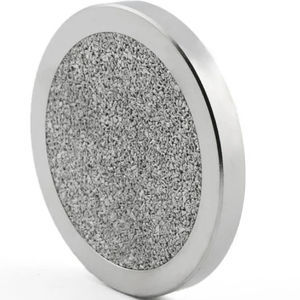

- Products
- Catalogs
- News & Trends
- Exhibitions
Nickel felt
Add to favorites
Compare this product
Characteristics
- Material
- nickel
Description
Nickel fiber felt is a versatile material made from high-quality nickel fibers, featuring wide-ranging applications and excellent performance characteristics. This felt-like material is composed of uniformly distributed and interconnected nickel fibers, forming an open porous structure. Nickel fiber felt exhibits high porosity, typically ranging from 60% to 90%, allowing for efficient gas and liquid transport. Its thickness can vary based on application requirements, typically ranging from 0.25 millimeters to 1 millimeters. Additionally, nickel fiber felt has a low density, typically between 0.1 grams per cubic centimeter to 0.3 grams per cubic centimeter, making it lightweight and flexible. Furthermore, nickel fiber felt demonstrates excellent temperature resistance, withstanding high operating temperatures of up to 600 degrees Celsius, and exhibits good chemical stability, making it resistant to corrosion in harsh environments.
Nickel fiber felt finds widespread applications across multiple industries. In the field of fuel cells, nickel fiber felt is used as a Gas Diffusion Layer (GDL) to enhance the performance and durability of Proton Exchange Membrane Fuel Cells (PEMFCs) and Solid Oxide Fuel Cells (SOFCs). It promotes efficient reactant distribution, enhances water management, and improves overall cell performance. Additionally, nickel fiber felt is extensively applied in redox flow batteries, electrolyzers, supercapacitors, and water treatment systems. In these applications, it serves as a GDL, optimizing electrochemical reactions, improving battery cycling performance, and providing excellent chemical stability and high surface area.
Other Baoji Yinggao Metal Materials Co., Ltd. products
Non-ferrous Metal Products
*Prices are pre-tax. They exclude delivery charges and customs duties and do not include additional charges for installation or activation options. Prices are indicative only and may vary by country, with changes to the cost of raw materials and exchange rates.





